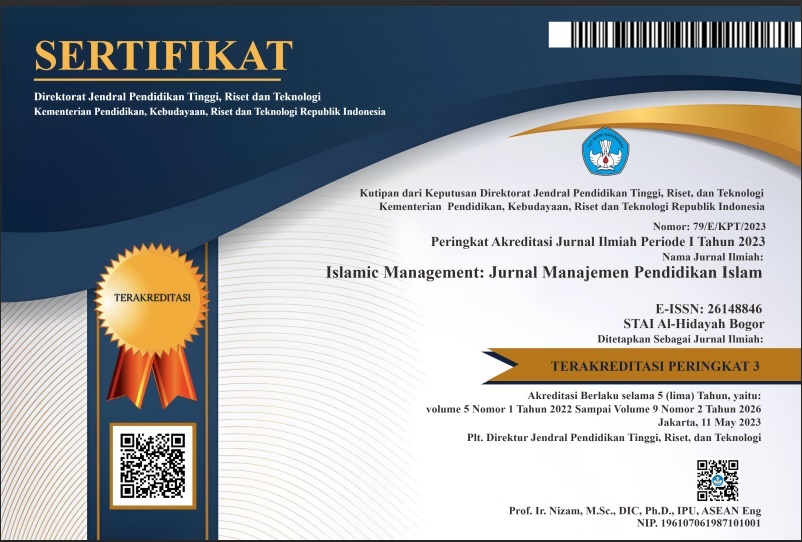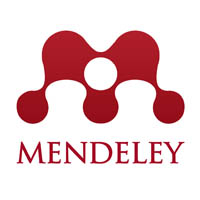HUMAN RESOURCE MANAGEMENT IN FORMING THE SPIRIT OF LIFE LONG LEARNERS AT SDIT MUTIARA INSAN SUKOHARJO
DOI:
https://doi.org/10.30868/im.v8i02.8644Keywords:
Management, Human Resource, Soul, Learner, LifeAbstract
This research aims to find out human resource management in the formation of a lifelong learning spirit at SDIT Mutiara Insan Sukoharjo. The method used in this study is a descriptive qualitative method of research typefield research. The results of the research on human resource management in the formation of a lifelong learning spirit at SDIT Mutiara Insan Sukoharjo which has been conducted are as follows: a) recruitment and selection, recruitment and selection teacher SDIT Mutiara Insan Sukoharjo is strict in ensuring that teachers have competencies and visions that are in line with the school. b) Professional Development, Professional self-development of teachers towards rapid technological developments and the ever-changing needs of students needs to be done so that teachers can adapt quickly. c) Performance Evaluation, carried out as a control for teachers who may still use old methods that may no longer be suitable for the needs and diversity of today's students in order to build a culture of critical and contextual thinking. d) Motivation and Empowerment, starting to become a teacher Life Long Learnerwhich is fun, can be done such as: creating learning goals, learning from small things, changing the way of learning to be fun, building an ecosystem of learning teachers, leadership support.
References
Ahadi, A. Pemanfaatan Media Youtube dalam Pembelajaran Pendidikan Agama Islam. Rayah Al-Islam, Vol. 8 No. 4 (2024): 2628-2643.
Candy, P. C. (1991). Self-Direction for Lifelong Learning: A Comprehensive Guide to Theory and Practice. Jossey-Bass.
Dessler, G. (2015). Human Resource Management (14th ed.). Pearson Education.
Fullan, M. (2001). Leading in a Culture of Change. Jossey-Bass.
Herzberg, F. (1959). The Motivation to Work. John Wiley & Sons.
Knowles, M. S. (1975). Self-Directed Learning: A Guide for Learners and Teachers. Association Press.
Latifah, U. Proses Evaluasi Kinerja Guru Di SMP Negeri 47 Surabaya. Jurnal Penelitian Ilmu Pendidikan Indonesia, Vol. 3 No. 1 (2024): 115.
Muzakki, H. (2015). Managing learning for quality improvement (mengelola pembelajaran untuk peningkatan mutu). Jurnal An-Nuha, Vol. 2 No. 1 (2015): 24.
Norazlinda. Kelestarian pembangunan profesionalisme guru dalam pembelajaran sepanjang hayat (Sustainability of Teacher Professional Development in Lifelong Learning). Jurnal Pembangunan Sosial, Vol. 22 No. 1 (2019): 22.
Nurhayati, N. Determinasi Manajemen Pendidikan Islam: Sistem Pendidikan, Pengelolaan Pendidikan, Dan Tenaga Pendidikan (Literatur Manajemen Pendidikan Islam). Jurnal Manajemen Pendidikan Dan Ilmu Sosial, Vol. 3 No. 1 (2022): 451-464.
Pare, A., & Sihotang, H. Pendidikan holistik untuk mengembangkan keterampilan abad 21 dalam menghadapi tantangan era digital. Jurnal Pendidikan Tambusai, Vol. 7 No. 3 (2023): 277.
Sergiovanni, T. J. (2009). The Principalship: A Reflective Practice Perspective (6th ed.). Allyn & Bacon.
Sudarsana, I. Pemikiran tokoh pendidikan dalam buku lifelong learning: policies, practices, and programs (Perspektif Peningkatan Mutu Pendidikan di Indonesia). jurnal penjaminan mutu, Vol. 2 No. 2 (2016): 44-53.
Sugiyono. (2017). Metode Penelitian Pendidikan: Pendekatan Kuantitatif, Kualitatif, dan R&D. Alfabeta.
Syafaruddin S. Guru pembelajar pada era globalisasi. NIZHAMIYAH, Vol. 8 No. 1 (2018): 5.
Undang-Undang Republik Indonesia Nomor 20 Tahun 2003 tentang Sistem Pendidikan Nasional.
Wiyono, G. Strategi penerapan organizational learning untuk membentuk guru pembelajar di sekolah. Jurnal Edukasi Elektro, Vol. 1 No. 1 (2023): 22.
Downloads
Published
How to Cite
Issue
Section
Citation Check
License
Copyright (c) 2025 Indriyani Indriyani, Datien Eriska Utami, Waluyo Waluyo

This work is licensed under a Creative Commons Attribution-ShareAlike 4.0 International License.
Authors who publish with this journal agree to the following terms:
- Authors retain copyright and grant the journal right of first publication with the work simultaneously licensed under a Creative Commons Attribution License that allows others to share the work with an acknowledgment of the work's authorship and initial publication in this journal.
- Authors are able to enter into separate, additional contractual arrangements for the non-exclusive distribution of the journal's published version of the work (e.g., post it to an institutional repository or publish it in a book), with an acknowledgment of its initial publication in this journal.
- Authors are permitted and encouraged to post their work online (e.g., in institutional repositories or on their website) prior to and during the submission process, as it can lead to productive exchanges, as well as earlier and greater citation of published work (See The Effect of Open Access).






